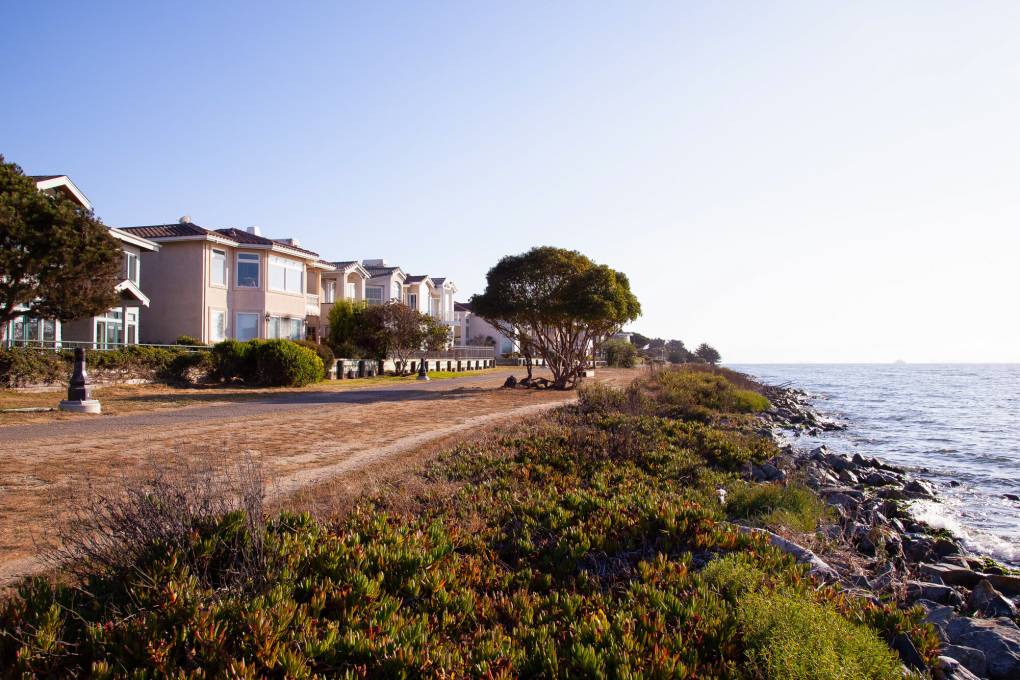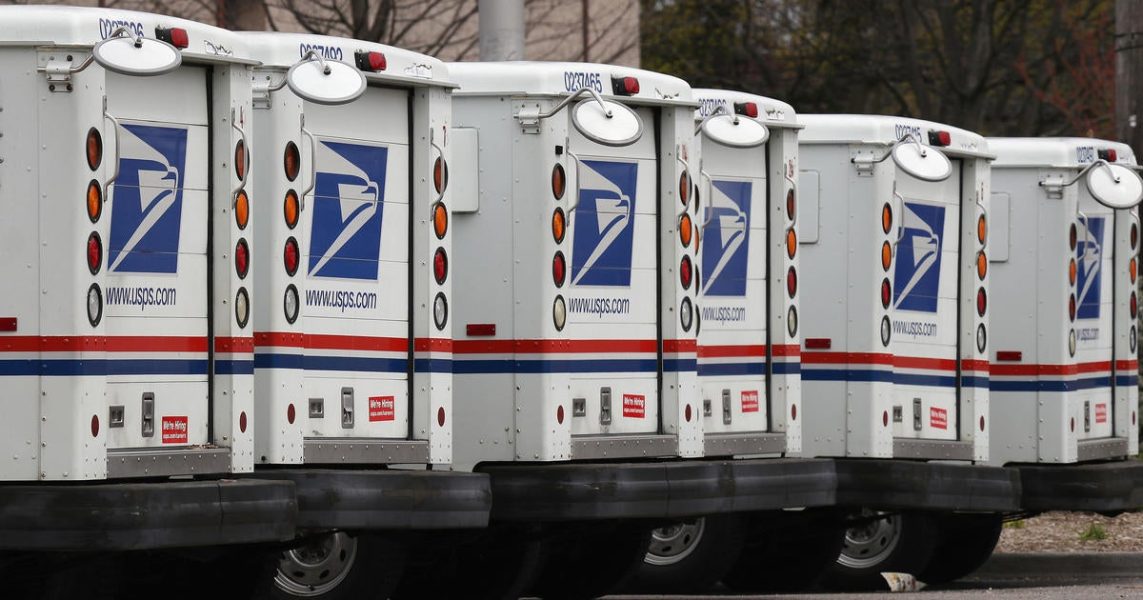Land Is Sinking Fast Around the Bay Area, Worsening the Effects of Sea Level Rise – KQED

An ongoing exploration of Bay Area hip-hop history.Listen to breaking news on your schedule, in 20 minutes or less.Uncover the surprising backstory of popular dishes in KQED’s food history series.Watch recordings of recent KQED Live events.Support KQED by using your donor-advised fund to make a charitable gift.An ongoing exploration of Bay Area hip-hop history.Listen to breaking news on your schedule, in 20 minutes or less.Uncover the surprising backstory of popular dishes in KQED’s food history series.Watch recordings of recent KQED Live events.Support KQED by using your donor-advised fund to make a charitable gift.Please try againThe land at multiple spots along California’s iconic coastline is sinking at startling rates, compounding the flooding risks posed by future sea level rise from Humboldt Bay to San Diego, according to a new study led by scientists at NASA’s Jet Propulsion Laboratory.
The speed of the land sinking, or subsidence, helps show that regional estimates “largely underestimate” sea level rise in parts of the San Francisco Bay Area and Los Angeles. That adds a new layer of complication for cities along the 800-plus miles of coastline preparing for a far wetter future, while some are already dealing with flooding from climate-fueled storms and king tides.
Using satellite imagery, the scientists found that land along San Francisco Bay in San Rafael, Corte Madera, Foster City and Alameda’s Bay Farm Island is subsiding more than 0.4 inches a year. When considering the subsidence rate, local sea levels could rise by more than double the regional estimate by 2050.
The land at multiple spots along California’s iconic coastline is sinking at startling rates, compounding the flooding risks posed by future sea level rise from Humboldt Bay to San Diego, according to a new study led by scientists at NASA’s Jet Propulsion Laboratory.The speed of the land sinking, or subsidence, helps show that regional estimates “largely underestimate” sea level rise in parts of the San Francisco Bay Area and Los Angeles. That adds a new layer of complication for cities along the 800-plus miles of coastline preparing for a far wetter future, while some are already dealing with flooding from climate-fueled storms and king tides.Using satellite imagery, the scientists found that land along San Francisco Bay in San Rafael, Corte Madera, Foster City and Alameda’s Bay Farm Island is subsiding more than 0.4 inches a year. When considering the subsidence rate, local sea levels could rise by more than double the regional estimate by 2050.“Areas might be affected by the rising water much sooner than we anticipate, and that brings by itself increased flooding and tidal inundation,” said Marin Govorcin, the study’s lead author and a NASA remote sensing scientist in Southern California. “All of this can affect people on a daily basis.”Since the 1880s, the Pacific Ocean has risen by about 8 inches along the West Coast. However, state scientists predict that in the worst-case scenario, the bay will rise more than a foot by 2050 and more than 6 feet by the end of the century.The new study shows how vertical land movement can be unpredictable in its scope and pace due to human-caused factors, like groundwater pumping, and natural ones, like tectonic activity. The researchers analyzed satellite observations from 2015 to 2023 to capture land movement by inch, suggesting that their estimates of vertical land motion plus sea level rise are more accurate than current models, which are based on tide gauge measurements.Govorcin blames human activity for some of the subsidence. In the Bay Area, he said areas where cities reclaimed parts of the bay are especially vulnerable to sinking land and, in turn, future sea level rise.“In many parts of the world, like the reclaimed ground beneath San Francisco, the land is moving down faster than the sea itself is going up,” Govorcin said.Not all of coastal California is sinking. For example, the researchers found areas including Santa Barbara and Long Beach are rising due to human activity, such as recharging groundwater basins and injecting fluid into the ground near oil and gas wells.“We anticipate this land movement could lead to potential structural instability in our critical infrastructure,” Govorcin said. “We can see all of that from a satellite, and we can use that to inform the local authorities.”According to the study, infrastructure such as San Francisco International Airport could see nearly a foot of sea level rise by 2050.“What this says is that our situation in relation to flooding is worse than we thought,” said Kristina Hill, a UC Berkeley professor and a leading sea level rise scientist who was not involved in the study. “The region’s economy depends on the airports, so we’ll need to continue to focus on how to adapt those airports to these new conditions.”Of all the subsidence hot spots the researchers highlighted, Hill was most worried about the North Bay city of San Rafael, where she visited during a king tide in December and saw bay water rushing down the streets.“It’s a game of inches there, and to talk about a third of a meter or more of sea level rise, that indicates to me that San Rafael is going to be the first to need very serious interventions in the region,” she said.Hill said Bay Area sea level rise planners should “develop San Rafael as a test case for how cities are going to adapt” because it is ground zero for rising tides in the region. The city’s Canal neighborhood — home to many low-income Latinx families — is one of the areas at the highest risk of sea level rise in Marin County.“It’s got a lot of people living in it who are very sensitive to disruption,” she said. “It seems like something that the whole region should start looking at. How can we protect San Rafael, and can we develop strategies that we can use in other parts of the Bay Area as well?”The researchers also discovered land sinking around Point Reyes and the Russian River Valley but at lower rates.One caveat to the study is that the researchers don’t model future subsidence, said Rylan Gervase, director of legislative and external affairs for the Bay Conservation and Development Commission, which released the area’s first regional sea level rise plan in December.“We’re going to see a wide range of impacts; everything from highways along the bay shore to San Francisco Airport is going to be impacted,” he said. “The study does give us a good picture of what subsidences occurred in the past up until the present, but that doesn’t necessarily mean that the rate of subsidence is going to be constant.”The commission’s regional plan advises cities and counties to consider subsidence when developing state-mandated sea level rise adaptation plans.Dana Brechwald, the commission’s assistant planning director for climate adaptation, said staff had built the study’s methodology into their planning efforts and added that the continued data would only strengthen local plans. But she noted that cities and counties most affected by subsidence will likely need to take greater measures to plan for even more sea level rise than originally expected — which could include larger levees or infrastructure projects and solutions for inland flooding.“This will increase the level of protection required because it amplifies the flooding,” she said. “It may change where flooding comes from or the extent of the flooding depending on where subsidence occurs.”To learn more about how we use your information, please read our privacy policy.





